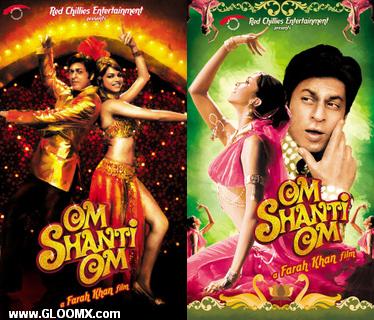Biography of Indian Movies
The cinema of India has had a profound effect on cinema across the world since the early 20th century.[1] It consists of films produced across India, which includes the cinematic cultures of Andhra Pradesh, Assam, Bihar, Gujarat, Haryana, Jammu and Kashmir, Karnataka, Kerala, Maharashtra, Manipur, Orissa, Punjab, Tamil Nadu, Uttar Pradesh and West Bengal. Indian films came to be followed throughout Southern Asia, the Greater Middle East, Southeast Asia, and the former Soviet Union. The cinema as a medium gained popularity in the country as many as 1,000 films in various languages of India were produced annually.[2]
Expatriates in countries such as the United Kingdom and the United States continue to give rise to international audiences for Indian films of various languages. Erstwhile Filmmaker, Dadasaheb Phalke is the Father of Indian cinema.[3][4][5][6] The Dadasaheb Phalke Award, for lifetime contribution to cinema, was instituted in his honor, by the Government of India in 1969, and is the most prestigious and coveted award in Indian cinema.[7]
In the 20th century, Indian cinema, along with the Hollywood and Chinese film industries, became a global enterprise.[8] At the end of 2010 it was reported that in terms of annual film output, India ranks first, followed by Hollywood and China.[9] Enhanced technology paved the way for upgrading from established cinematic norms of delivering product, altering the manner in which content reached the target audience. Visual effects based, Super hero and Science fiction films like Krrish, Enthiran, Ra.One and Eega emerged as blockbusters.[8] Indian cinema found markets in over 90 countries where films from India are screened.[10]
Films by Indian directors like Satyajit Ray, Mrinal Sen, Ritwik Ghatak, Adoor Gopalakrishnan, G. Aravindan,[11] Shaji N.Karun, Girish Kasaravalli,[12] Shyam Benegal[13] and Mani Ratnam have been screened in various international film festivals.[10] Other Indian filmmakers such as Shekhar Kapur, Mira Nair, Rajnesh Domalpalli, Deepa Mehta, Nagesh Kukunoor and Karan Johar have also found success overseas.[14] The Indian government extended film delegations to foreign countries such as the United States of America and Japan while the country's Film Producers Guild sent similar missions through Europe.[15] Sivaji Ganesan, and S. V. Ranga Rao won their respective first international award for Best Actor held at Afro-Asian Film Festival in Cairo and Indonesian Film Festival in Jakarta for the films Veerapandiya Kattabomman and Narthanasala in 1959 and 1963
The cinema of India has had a profound effect on cinema across the world since the early 20th century.[1] It consists of films produced across India, which includes the cinematic cultures of Andhra Pradesh, Assam, Bihar, Gujarat, Haryana, Jammu and Kashmir, Karnataka, Kerala, Maharashtra, Manipur, Orissa, Punjab, Tamil Nadu, Uttar Pradesh and West Bengal. Indian films came to be followed throughout Southern Asia, the Greater Middle East, Southeast Asia, and the former Soviet Union. The cinema as a medium gained popularity in the country as many as 1,000 films in various languages of India were produced annually.[2]
Expatriates in countries such as the United Kingdom and the United States continue to give rise to international audiences for Indian films of various languages. Erstwhile Filmmaker, Dadasaheb Phalke is the Father of Indian cinema.[3][4][5][6] The Dadasaheb Phalke Award, for lifetime contribution to cinema, was instituted in his honor, by the Government of India in 1969, and is the most prestigious and coveted award in Indian cinema.[7]
In the 20th century, Indian cinema, along with the Hollywood and Chinese film industries, became a global enterprise.[8] At the end of 2010 it was reported that in terms of annual film output, India ranks first, followed by Hollywood and China.[9] Enhanced technology paved the way for upgrading from established cinematic norms of delivering product, altering the manner in which content reached the target audience. Visual effects based, Super hero and Science fiction films like Krrish, Enthiran, Ra.One and Eega emerged as blockbusters.[8] Indian cinema found markets in over 90 countries where films from India are screened.[10]
Films by Indian directors like Satyajit Ray, Mrinal Sen, Ritwik Ghatak, Adoor Gopalakrishnan, G. Aravindan,[11] Shaji N.Karun, Girish Kasaravalli,[12] Shyam Benegal[13] and Mani Ratnam have been screened in various international film festivals.[10] Other Indian filmmakers such as Shekhar Kapur, Mira Nair, Rajnesh Domalpalli, Deepa Mehta, Nagesh Kukunoor and Karan Johar have also found success overseas.[14] The Indian government extended film delegations to foreign countries such as the United States of America and Japan while the country's Film Producers Guild sent similar missions through Europe.[15] Sivaji Ganesan, and S. V. Ranga Rao won their respective first international award for Best Actor held at Afro-Asian Film Festival in Cairo and Indonesian Film Festival in Jakarta for the films Veerapandiya Kattabomman and Narthanasala in 1959 and 1963
Indian Movies
Indian Movies
Indian Movies
Indian Movies
Indian Movies
Indian Movies
Indian Movies
Indian Movies
Indian Movies
Indian Movies
Indian Movies
Indian Movies






/aiyyaa-download-mp3-songs-c.jpg)





No comments:
Post a Comment